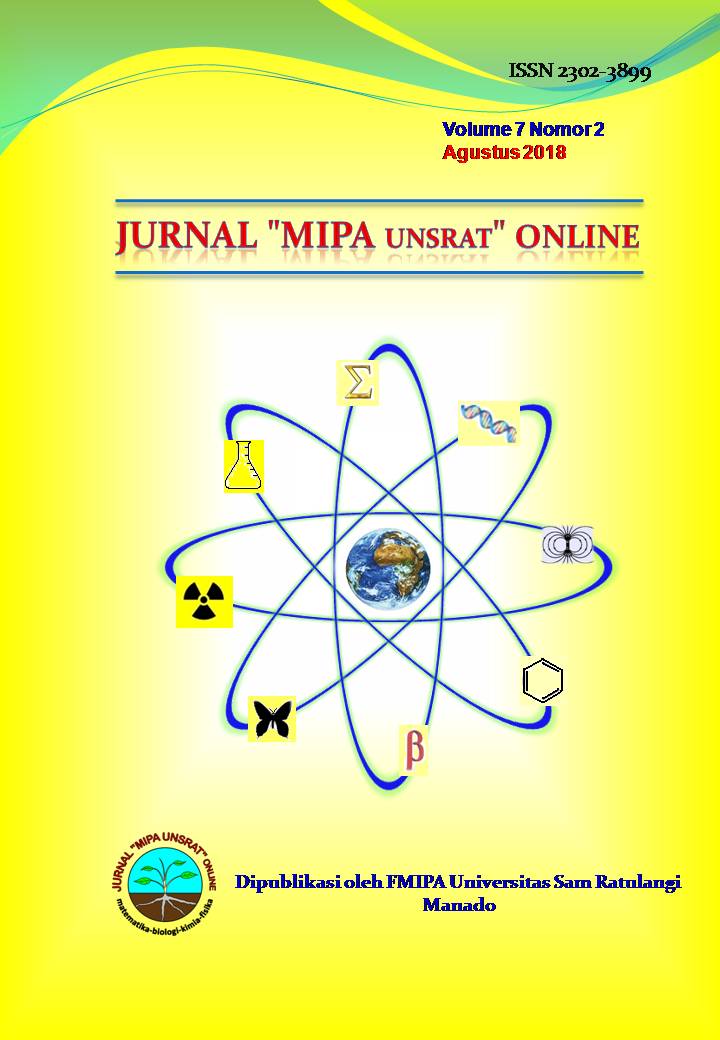Identifikasi Bakteri Endofit Daun Ficus Minahassae (Teijsm. & De Vriese) Miq. Berdasarkan Gen 16s rRNA
DOI:
https://doi.org/10.35799/jm.7.2.2018.20620Abstract
Bakteri endofit telah ditemukan hampir di semua tumbuhan yang telah diteliti. Bakteri-bakteri ini mengkolonisasi jaringan internal tumbuhan inang. Di Sulawesi Utara terdapat salah satu tumbuhan ara, yaitu Ficus minahassae, yang hanya tumbuh lokal di daerah ini dan Filipina. Tujuan dari penelitian ini yaitu untuk mengidentifikasi dari bakteri endofit yang mendiami daun F. minahassae. Isolasi bakteri endofit dilakukan dengan menebarkan ekstrak daun yang steril di atas permukaan media Nutrient Agar. Isolat murni yang diperoleh diidentifikasi menggunakan penanda gen 16S rRNA. Dari hasil penanaman ekstrak daun F. minahassae diperoleh dua isolat, yaitu YL1 yang koloninya berwarna kuning, dan YL2 yang koloningnya berwarna krem. Dengan melakukan proses BLAST di GenBank, YL1 memiliki kemiripan 100 % dengan Brachybacterium muris, sedangkan YL2 memiliki kemiripan 99 % dengan Pseudacidovorax intermedius. Analisis filogenetik yang dilakukan menggunakan metode UPGMA yang terintegrasi pada piranti lunak Geneious memperlihatkan perbedaan taksa dari bakteri endofit yang ditemukan pada daun F. minahassae.
Endophytic bacteria have been found in virtually every plant studied. These bacteria colonize the internal tissue of the host plant. In North Sulawesi there is a fig plant named Ficus minahassae which is endemic to the area and the Philippines. This research was aimed to identify of the endophytic bacteria inhabit the endosphere of the leaf of F. minahassae. Isolation of endophytic bacteria was performed by spreading the sterile leaf extract onto NA media. The pure isolates were identified using 16S rRNA gene marker. There were two isolates, designated as YL1 and YL2, were isolate from the leaf of F. minahassae. The color of isolate YL1 was yellowish and YL2 was creme. Using BLAST nucleotide, YL1 showed 100 % similarity with Brachybacterium muris, and YL2 showed 99 % similarity with Pseudacidovorax intermedius. Phylogenetic analysis performed using UPGMA method integrated on Geneious software showed different taxa from endophytic bacteria found on F. minahassae leaf.






